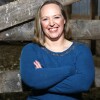As I was editing stories this week, it piqued my attention that two separate, unrelated articles had sources referring to something in agriculture as a gamble.
There is no Vegas Strip running through the northern Plains. But so much of what we do here is a gamble.
ADVERTISEMENT
Seed goes into the ground. We gamble on whether it’ll rain. Or maybe there’ll be wind, blowing the seed from the ground or sheering off plants that just pushed through the soil. Maybe the conditions will be perfect. Or maybe they’ll be perfect for a while, followed by an early frost in the fall. What are the odds of that?
Cattle go out on pasture. Again, we gamble on whether the rain will keep the grasses lush. On whether the fences will keep the cattle in. On whether the calves will grow or whether foot rot or pneumonia or a score of other diseases or predators will reduce their numbers.
I helped my husband sort yearling heifers recently, a final decision on which ones were to be sold and which ones were to be kept for breeding. Near the end, we had a group of probably five or so animals that we discussed at length. Did those two have too much white on their heads to fit into the rest of the group? Is that one thick enough? Are they more valuable to sell or to keep?
As we agonized over the decision, I reminded him that it might be the closest we ever could have to a win-win situation. Feeder calf prices are at all-time highs, so selling an extra heifer or two certainly wouldn’t hurt us in the short term. And with the U.S. cattle herd still shrinking, it seems likely there will be solid bred heifer prices in the fall or that the heifers will be valuable to keep in our own herd.
But it’s still a gamble. When the animals we sell enter the ring, there’s no controlling how many bidders raise their hands or nod their heads. No matter what the futures market says, all that matters is what happens in one sale barn, one day. It’s a gamble on the past year’s worth of work. And for the heifers we keep, there’s no guarantee they’ll get bred. And if they get bred, there is no guarantee they’ll deliver healthy calves. And if they deliver healthy calves, there’s no guarantee the market will be strong on the day we want to sell it a year or so later.
Every step in the process is its own roulette wheel.
If we weren’t in agriculture, would we be hitting the casinos to get the same rush of adrenaline that comes with these decisions? Or maybe playing the stock market for the long-term game of chance that does rely on some know-how?
ADVERTISEMENT
While so much of what happens on farms and ranches relies on hard work, knowledge and experience, so much still hinges on things out of anyone’s control. There’s much to be lost, but we hang on because we know that — if everything goes right — there’s also much to be gained. To quote the late comedian Norm Macdonald, “Yeah man, they call gambling a disease, but it’s the only disease where you can win a bunch of money.”












